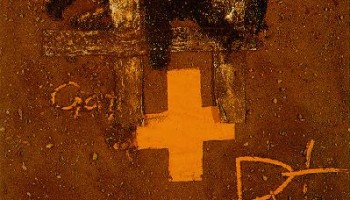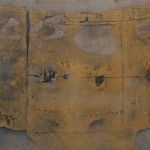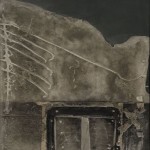Antoni Tapies

Antoni Tàpies is a Spanish painter born in Barcelona on December 13, 1923. He is considered to be one of the most famous European artists of his era. Before devoting himself to being an artist starting from from 1943, he studied law for 3 years. He is perhaps the best-known Catalan artist to emerge in the period since the Second World War.
He held his first solo exhibition in 1950, at the Galeries Laietane in Barcelona. In the early 50s he moved Paris we he lived and painted for many years, and where he would return throughout his career. Both in Europe and abroad, the highly authoritative French critic and curator Michel Tapié (no relation, despite having a similar name) vigorously promoted Antoni Tàpies paintings.
Click here to continue reading about this artist
By the end of the 1950’s his international reputation was well rooted. Starting in the late 50s to the early 60s, Tàpies began working with artists Antonio Saura, Enrique Tábara, Manolo Millares and several other Spanish Informalist artists. Beginning in the1970’s (perhaps motivated by Pop art) he began to incorporate more significant objects into his paintings, like broken pieces of furniture and so forth. Tàpies’s contributions have had a tremendous influence on art all over the world, particularly in the areas of painting, etchings, lithography and sculpture. Examples of his work can be found in major art collections the world over. His work is often associated with Tachisme and Abstract Expressionism.
Fundació Tàpies, is an art museum located in Barcelona, Spain which is dedicated to his life and work. At the time of this writing he is living in Barcelona and his work is represented by The Pace Gallery, New York.
Tàpies was raised into the Spanish nobility by King Juan Carlos I on April 9, 2010 with the hereditary title of Marqués de Tàpies (or Marquess of Tàpies).
- Photo of Antoni Tapies
- Great Painting – 1958
- Black Composition – 1958
- Gray Relief on Black – 1959
- Roig E Negre – 1963
- The Envelope – 1967
- Pants and Woven Wire – 1973
- White and 10 Holes – 1973
- Creu I R – 1975









